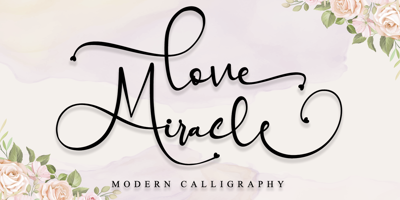Licensing Explained: Understanding Font Usage for Personal vs. Commercial Projects
Licensing Explained: Understanding Font Usage for Personal vs. Commercial Projects
You’ve found the perfect font for your project, hit the download button, and you’re ready to start designing. But wait—did you read the fine print?
Every font you download, whether it cost money or was free, is legally treated as software. Just like any program or application, it comes with an End-User License Agreement (EULA) that dictates exactly how you’re allowed to use it. Ignoring this license isn't just poor practice; it can lead to serious legal problems and costly demands for payment.
For any designer, the single most critical distinction is understanding the difference between a Personal Use License and a Commercial Use License. Getting this wrong can turn a simple download into a major business liability.
The Core Difference: Personal vs. Commercial
The distinction hinges entirely on whether your project has the potential to generate profit, revenue, or promote a business.
1. Personal Use License (The Hobbyist Zone)
This license strictly limits your use of the font to projects that are non-profit and non-business related.
Examples of Personal Use:
-
Hobby Websites: A personal blog or portfolio that does not run paid ads or sell services.
-
Private Invitations: Wedding announcements, birthday cards, or party invitations for friends and family.
-
Educational Work: School assignments, student portfolios, or non-commercial research materials.
The Danger Zone: If you use a Personal Use font to design a client's logo, a product you intend to sell (even a simple t-shirt), or a promotional banner for a business, you are violating the EULA and infringing upon the designer’s rights.
2. Commercial Use License (The Business Essential)
This license is mandatory and grants you the right to use the font for projects aimed at making money or promoting any kind of business activity.
Examples of Commercial Use:
-
Branding & Logos: Designing a company's logo, color palette, or visual identity.
-
Merchandise: Using the font on products for sale (mugs, apparel, digital templates).
-
Advertising: Print brochures, online ads, social media campaigns, or commercial videos.
-
Client Work: Any paid design project, regardless of the final output (print or digital).
The Bottom Line: For any professional design work, you must have a Commercial Use license. Luckily, many high-quality fonts are released free for commercial use (like those found under the Open Font License), eliminating the cost barrier.
Four Critical Commercial License Types
A commercial license is not always one-size-fits-all. Fonts are often licensed based on the specific medium of use. You may need to purchase separate licenses to cover different applications.
1. Desktop License (Print and Static Graphics)
This is the most common type. It allows you to install the font on your personal computer and use it in standard software (Illustrator, Photoshop, Word).
-
Covers: Creating logos, printed materials (brochures, stationary), and static images (JPEGs, PNGs for social media).
-
Excludes: Embedding the live font file on a website or in a mobile app.
2. Webfont License (Website Embedding)
This license is required to host the actual font file on your web server so that visitors can view the font live in their browsers.
-
How it’s Billed: Often tracked by monthly page views or a fixed fee.
3. App/Ebook License
This is necessary if you intend to embed the font within a proprietary mobile application (iOS/Android), software interface, or a commercial e-book file (EPUB/MOBI).
4. Server/SaaS License
This is typically the most specialized license, required when the font is hosted on a server that allows end-users to select and apply the font to create their own custom content (e.g., a website that lets customers design personalized greeting cards).
Ethical Strategies: Designing Professionally for Free
You can access stunning, licensed fonts without financial risk by using these strategies:
-
Embrace the Open Font License (OFL): This license is the most friendly to designers. OFL fonts are almost always 100% free for all commercial uses (Desktop, Web, App). Look for this license when downloading from reputable free font sites.
-
Maximize Free Trial Weights: Many top-tier type foundries offer the "Regular" or "Light" weight of an expensive font family for free commercial use. Use this as a headline font for instant premium appeal while saving the cost of the full family.
-
Utilize Subscription Libraries: If you have a subscription to Adobe Creative Cloud, you already have full, commercially licensed access to the entire Adobe Fonts library. This eliminates the need to buy individual font licenses for your projects.
The golden rule of typography remains: When in doubt, don't use it. If a license is unclear or restricts commercial use, move on to an OFL alternative. By respecting the EULA, you ensure your brand is built on a solid, legal, and ethical foundation.




